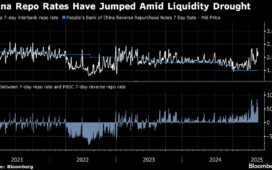Global financial markets were over the weekend closely watching Jackson Hole, Wyoming, where US Federal Reserve Chairman Jerome Powell delivered his much-anticipated speech. This annual economic symposium, hosted by the Kansas City Federal Reserve, often sets the tone for financial markets.
In his speech, Powell conveyed a cautious outlook on the US economy, particularly regarding inflation and potential rate adjustments. The immediate reaction was a noticeable dip in the US Dollar Index (DXY).
Powell’s remarks suggested a more dovish stance than expected, indicating the Federal Reserve might be nearing the end of its rate-hiking cycle. This prompted a swift market response, with the USD weakening against a basket of major currencies.
For foreign investors holding US assets, this movement heightened concerns about the risks associated with a depreciating USD.
Understanding the FX risks for Australian investors
Foreign exchange (FX) risk refers to the possibility that changes in currency exchange rates will negatively impact the value of an investor’s holdings.
For an Australian investor, for example, a weakening USD means that when they convert their US investment returns back into AUD, they may receive less than initially expected. This is particularly troubling when the USD experiences prolonged depreciation, as it can significantly reduce the value of foreign-held US assets.
The risk here is twofold. First, there is the direct impact of currency devaluation on investment returns. For instance, if the USD loses 10% of its value against the AUD, an investment that earned a 5% return in USD terms would result in a net loss when converted back into AUD. Second, a weaker USD often signals broader economic issues, such as slowing growth or rising US inflation, which could further undermine the attractiveness of US assets.
The growth of foreign ownership in US stocks
Foreign ownership of US corporate equity has in recent decades grown significantly (to around 40% in 2019, according to the Tax Policy Center), reflecting the increasing globalisation of financial markets. This trend underscores the strong global appeal of US companies, driven by factors such as economic stability, market depth, and innovative strength.
However, this rise in foreign ownership also means that international investors, including those in Australia, are more exposed to fluctuations in the USD. As foreign-held US assets grow, so does the impact of a weakening USD on global investment portfolios.
With nearly half of US corporate equity now owned by foreigners, the risks associated with a declining USD are more pronounced. A prolonged depreciation could lead to significant losses for these investors, particularly if they have not hedged against currency risk.
Strategies to mitigate FX risks
Given the potential risks associated with a weakening USD, Australian investors should consider diversification as a primary strategy to protect their portfolios.
By spreading investments across various countries and currencies, investors can reduce their reliance on any single currency, including the USD. This approach not only mitigates FX risk but also provides exposure to growth opportunities in other regions, potentially enhancing overall portfolio returns.
Diversification can also involve investing in different asset classes that may be less sensitive to currency fluctuations. For instance, commodities like gold, often viewed as a hedge against currency depreciation, could provide a buffer against a declining USD. Similarly, investments in sectors that benefit from a weaker dollar, such as US exporters, might offer additional protection.
Currency hedging is another effective approach to managing FX risk. By using financial instruments like forward contracts, options, or currency swaps, investors can lock in exchange rates or hedge against unfavourable currency movements. For example, an Australian investor could use a forward contract to secure the USD/AUD exchange rate for a future date, thus shielding themselves from further USD depreciation.
While these strategies can mitigate FX risk, they also come with costs and complexities that must be carefully evaluated.
Conclusion: navigating uncertain waters
Amid global economic uncertainty and continued downward pressure on the USD, effective risk management strategies become crucial for safeguarding wealth. Investors must remain vigilant, closely monitoring economic indicators and central bank policies that could influence the USD’s trajectory.
By prioritising diversification and considering currency hedging, Australian investors can better protect themselves against the risks of a declining USD.





